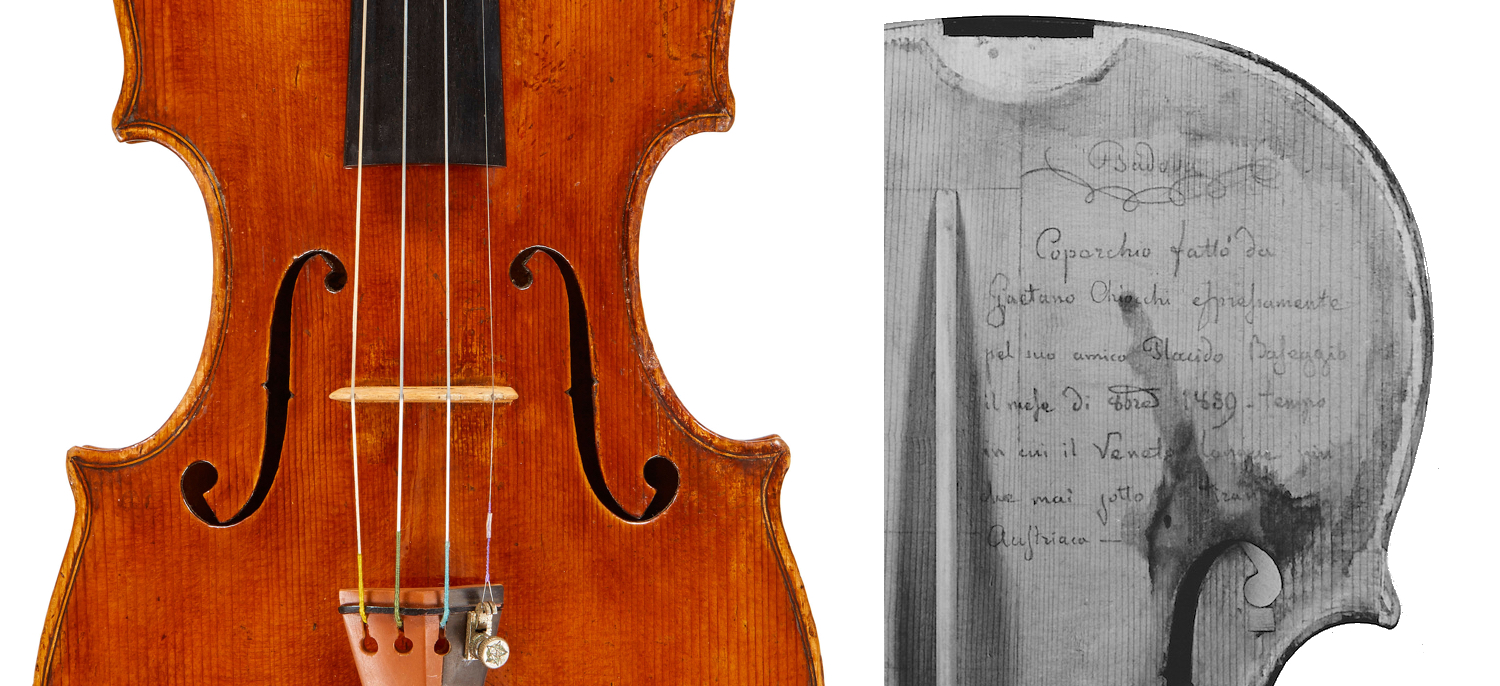How often have we looked at an 18th-century instrument and wondered what tales it could tell? Sadly, except for the most famous examples, the stories of most instruments are lost.
An interesting exception is this fine 1766 Michele Deconet violin, which reveals the story of its past through a previously hidden message. Inscribed in ink by the maker Gaetano Chiocchi in 1859 on the inside top of the violin, it reads (translated):
‘Padua. This top made by Gaetano Chiocchi expressly for his friend Placido Baseggio in the month of October 1859 – a time in which the Veneto languishes more than ever under Austrian tyranny.’

Deconet violin dated 1766 (left) and the internal inscription added in 1859 (right). Photos: Tarisio
More photosVenice had been under Austrian control since 1797, and the inscription presumably alludes to the fact that the city remained Austrian territory despite the 1859 Treaty of Villafranca, in which Venice was supposed to have become part of an independent Italian State. Venice finally joined the other Italian states in 1866.
Why the violin needed a new top is a mystery but it was probably the result of damage to the original. Restoration in the 19th century was a very undeveloped practice and it was common for damaged parts to be wholly replaced by the nearest available maker. With this repair, Chiocci not only performed a favor to his friend, but he preserved the work of an important Venetian maker about whom there is much debate. With his inscription, he preserved an important story for future generations.
Tarisio sold this Michele Deconet violin in 2013.